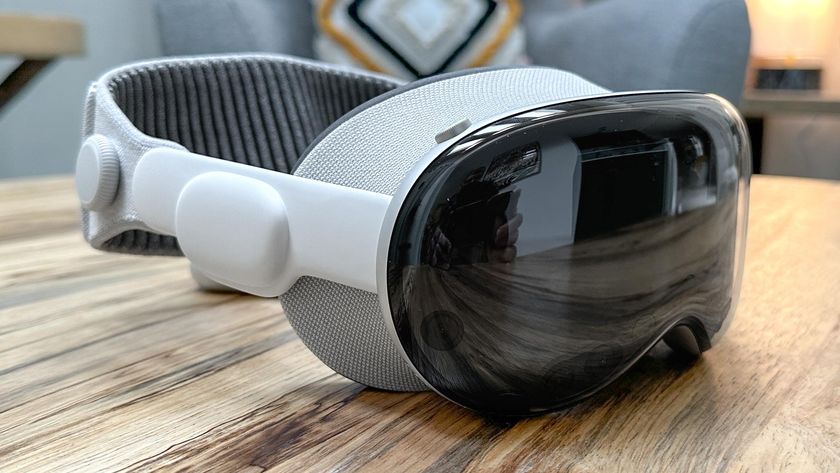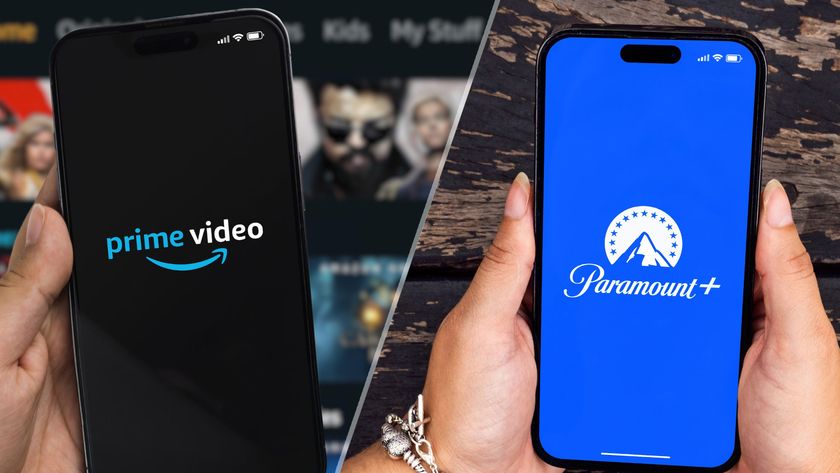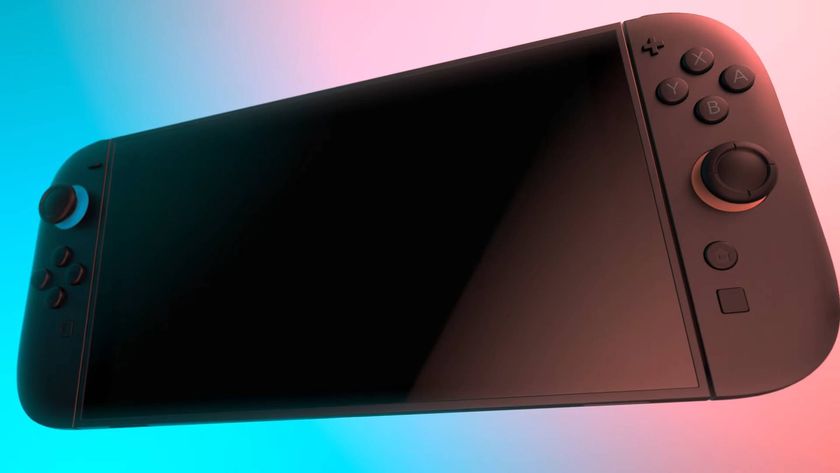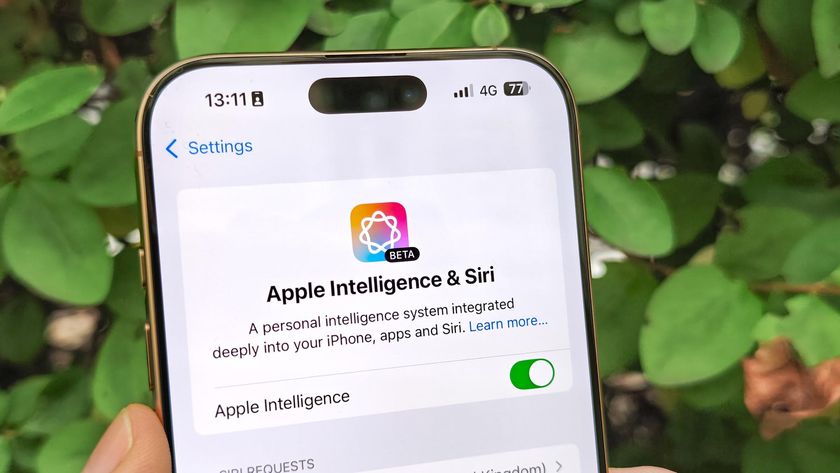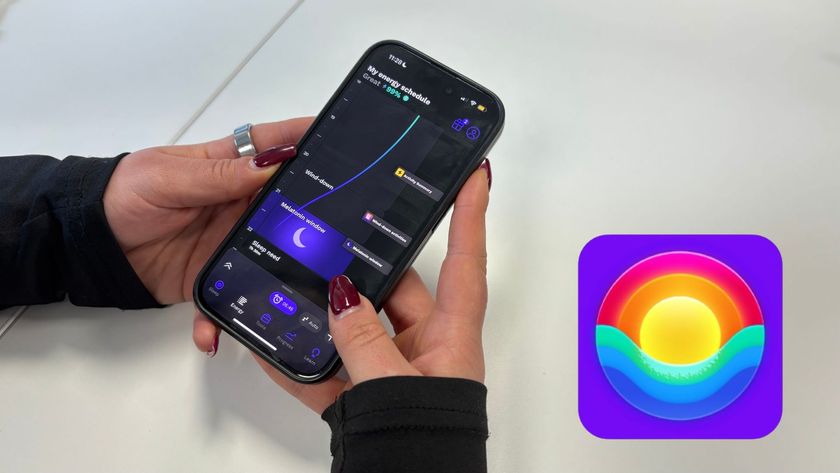I Won't Buy the Oculus Go or Lenovo Mirage Solo (and You Shouldn't, Either)
New stand-alone VR headsets that are truly wireless are a step forward for virtual reality enthusiasts — and that's the problem.
No more wires! You don't need a phone! I still don't care!
This past week, the stand-alone VR headset era began with the launch of the Oculus Go and Lenovo Mirage Solo. Both gadgets fix two of the biggest problems with virtual reality — and they both offer unique advantages. But, despite our fairly positive reviews, neither headset addresses the primary reasons why these things tend to lose their novelty faster than you can say "early adopter."

Of the two, the cheaper $199 Oculus Go has the potential to reach the most shoppers. The design is lighter than Lenovo's headset and less bulky, and it offers access to more than 1,000 apps and games.
Oculus, part of Facebook, also deserves credit for trying to make virtual reality less of a solitary experience. If your friend or family member has the headset, they can join you in a virtual apartment of sorts, where you both can watch photos and movies and talk to each others' avatars. You can even walk up to a table and play a card game together. I tried it during a demo, and it was pretty neat to be interacting with someone in London, even though I was sitting in New York City.
These new headsets feel like a necessary evolution of virtual reality, not the leap forward the category needs for them to become must-have devices.
The Oculus Go also benefits from having built-in speakers, while the Lenovo Mirage Solo forces you to plug in earbuds. However, while the Oculus controller is pretty easy to use, you can't really move around in virtual reality land. Or dodge. Or duck. Only the pricier $399 Lenovo lets you do this with its six degrees of freedom via WorldSense's motion-tracking technology.

The Lenovo Mirage Solo also packs more power than the Oculus Go, thanks to the former's Snapdragon 835 processor, compared to the latter's aging Snapdragon 821 chip. And while the Solo doesn't offer as many social apps as the Go, you can beam your VR experience to the nearest TV with a Chromecast plugged in. That way, your friends and family can get a taste of your adventures.
Too bad the Google Daydream-powered Mirage Solo has only a quarter of the content of the Oculus Go (about 350 titles).
Cutting the cord from a geeky headset doesn't cut out the geek part.
Overall, these new headsets feel like a necessary evolution of virtual reality, not the leap forward the category needs for them to become must-have devices. For one, you wouldn't want to be seen in public using either the Go or Solo. Cutting the cord from a geeky headset doesn't cut out the geek part.
Second, virtual reality is still waiting for killer apps, or at least titles and franchises that are household names. Where is the Call of Duty in VR? Or Fortnite? Or Star Wars (no, an add-on to Battlefront on the PSVR doesn't count). To me, it feels like publishers and developers like EA and Epic are forever dragging their feet, waiting for true mass adoption before they commit more resources.
MORE: Hands-On with Oculus Go's First Games
These stand-alone headsets have another issue, and that's the fact that no one under 13 is supposed to use them. This is the same health-related warning that comes with other headsets, because childrens' eyes are still developing. It's hard to indoctrinate the next wave of VR heads when they can’t participate.
Of course, virtual reality has uses other than entertainment and games, such as taking virtual tours and watching educational content. And Lenovo makes it pretty easy to create your own VR content with its Mirage Solo Camera. But it costs $299 for this accessory, and it captures only a 180-degree view, while you can pick up a great 360 camera like the Insta360 for the same price.
Where is the Call of Duty in VR? Or Fortnite? Or Star Wars?
Not all hope is lost when it comes to stand-alone VR headsets, however. The upcoming Oculus Santa Cruz promises better performance and more immersion via its six degrees of freedom and motion controllers. That will be pricier than the Go for sure, but the premium should be worth it, assuming the quality is that much better.
Still, as someone who has extensively played with the Gear VR, only to place it in a drawer, it's hard to envision a different fate for these new headsets.
Credit: Shaun Lucas/Tom's Guide
Sign up to get the BEST of Tom's Guide direct to your inbox.
Get instant access to breaking news, the hottest reviews, great deals and helpful tips.
Mark Spoonauer is the global editor in chief of Tom's Guide and has covered technology for over 20 years. In addition to overseeing the direction of Tom's Guide, Mark specializes in covering all things mobile, having reviewed dozens of smartphones and other gadgets. He has spoken at key industry events and appears regularly on TV to discuss the latest trends, including Cheddar, Fox Business and other outlets. Mark was previously editor in chief of Laptop Mag, and his work has appeared in Wired, Popular Science and Inc. Follow him on Twitter at @mspoonauer.
-
justin.m.beauvais I don't really think we will ever get a revolutionary VR device. VR in and of itself is revolutionary. It can only go so far. Once we get real world resolution and a comfortable size, that is it. There would be no more advances to be made in VR. It will become a monitor or a keyboard. Just another peripheral.Reply
As for the VR killer app... that is going to take some time. They basically have to re-invent the wheel. A normal shooter like CoD can't work on VR unless it is designed specifically for VR. Too much of the game relies on the standard inputs and if you put those virtual guns into the hands of people who actually have to aim them, people will get angry. They don't want to do work like that. They want to point, put a dot on the screen on a bad guy's head and click.
Now, I've been playing Fallout VR and I have another issue that will plague games ported to VR. It is too darn big. It is a huge and expansive world that is a pleasure to behold in VR... but it takes too long to GET anywhere. These FPS games that involve running across an airport or town to reach an objective will not be fun. We are never going to see a PUBG VR because of this. Gamers would have to deal with the reality of war... it is hard to aim a gun to get a 5.56mm chunk of lead into the 1 meter wide torso of a person 200 meters away. It is even harder when you can't shoulder the weapon. There is a reason the rifle is made the way it is... and no wand controller will ever emulate that.
The appetite of the current gaming generation is not quite in sync with what VR is really good at. A game like Skyrim VR is perfect, aside from the sheer size of the world (and the spiders). You have swords that you swing, a bow that you pull back and aim, fists, and magic. All work well with wand controllers. Honestly, Skyrim VR might be the best VR game around based on the beautiful world and visuals, intuitive combat system, great story, and dragons. I can't think of any other VR game I want to just sink hours into. Skyrim, if it was released new on VR, would be the killer app. It is just a little sad that we are all tired of it after seven years of re-releases.
I kind of feel like people have unrealistic expectations of VR. People have always been waiting for "the next big thing" with VR and have not been buying it. That makes no sense. VR needs funding to get better. Funding that comes from people purchasing games and hardware. It isn't going to get anywhere if people keep saying "It isn't perfect yet, don't buy it." Imagine if everyone had that kind of thinking when personal computers were taking off, or smart phones. We wouldn't be where we are today with all this great hardware. Buy things. Give feedback. Vote with your wallet instead of just commenting on the internet. Reward products that do things well and don't buy products that do things badly. That is the only way we are going to push VR forward. -
leelapfung For me, the problem is the quality of the real time videos generated by the games or the apps. Pre-recorded videos are good enough now, but the real time ones are usually very "blocky".Reply -
cartmaneric Justin (above) has a great post. I recommend reading the whole thing. Rift owner here. The (quote) AAA titles on the Rift are an absolute blast. The problem, as mentioned in the article, is the amount of content. The same games that were AAA two years ago are still almost all that there is. Big gaming houses simply have no interest in making games for VR from scratch - the time and investment and the meager payoff doesn't make fiscal sense. There's a game on the Rift made by 4A (the Metro series) called Arktika 1. It's absolutely beautiful and a joy to play - and no one played it. No one bought it. 4A will not be making another game for VR for a LONG TIME. Ports, like Skyrim and Fallout and even The Talos Principle and some others, might become a standard thing - where with little changes companies can exploit VR enthusiasts with a second purchase. But there is no money incentive for gaming houses to design strictly for VR. Which is a shame. Because when a game is good in VR it is among the best kind of gaming experience you can have. I'm hesitant to tell friends to buy the Rift at $400 even if they have the computer to handle it. Not because of the cost or that its first gen or has wires all over the place. The only reason I don't recommend it is because of the limited content. With that said, and echoing what Justin wrote, Skyrim might just be that killer app. When modded out it is so damn big and so much fun that I am tempted to now tell friends to get their $400 Rift JUST to play Skyrim. It is THAT freakin' great!!Reply -
diptiman40 To me the entire VR concept will not fly a lot and its more like a loner device. Something when you use you do not see or hear surroundings; which makes a very bad concept. Well computer games is the only thing which it can be used for. Watching photos, movies etc are not very good use case for sure. Overall something which has limited possibilities. I won't buy it.Reply -
zim3942 I don't understand the vr naysayers. I have a Vive. I really enjoy my Vive. Itsnanrotally different experience then sitting on your butt and playing these "killer apps' you speak of on a monitor. I'd rather play ping pong in vr than fortnite any day. It's using your actual hand eye coordination and arms vs sliding a mouse around. VR technology is a toddler right now but it's still a pretty sweet experience. So articles like this are kind of dumb and short sighted. The apps will improve and the tech will improve but neither are as terrible right now as some would have you think.Reply -
cybrdmn They have been promising flying cars since I was a little kid. I won’t buy one until they do, and you shouldn’t either.Reply -
suso "it captures only a 180-degree view, while you can pick up a great 360 camera like the Insta360 for the same price."Reply
Are you comparing a 2D camera like Insta360 with a 3D camera like Lenovo Mirage? It certainly means you haven't watched any 3D video on a VR headset, because the difference is like day and night. With a 3D video you get an immersive experience, while a 2D video is appalling.
360 vs 180 is not that important. For 99% of cases 180 degree is more than enough, it's not actually comfortable to keep looking back for most videos. 180 3D is far better than 360 2D -
vrsverige When VR gets good enough its not just another peripheral. Its the final peripheral period. And thats so disrutpive its scary. What can stop that, seriously?Reply -
soloripper7 You seem to have missed the point of the Go. It's a cheap device geared towards people on the fence. The Santa Cruz is an expensive device for enthusiasts. The average consumer is not going to buy a Santa Cruz!Reply

